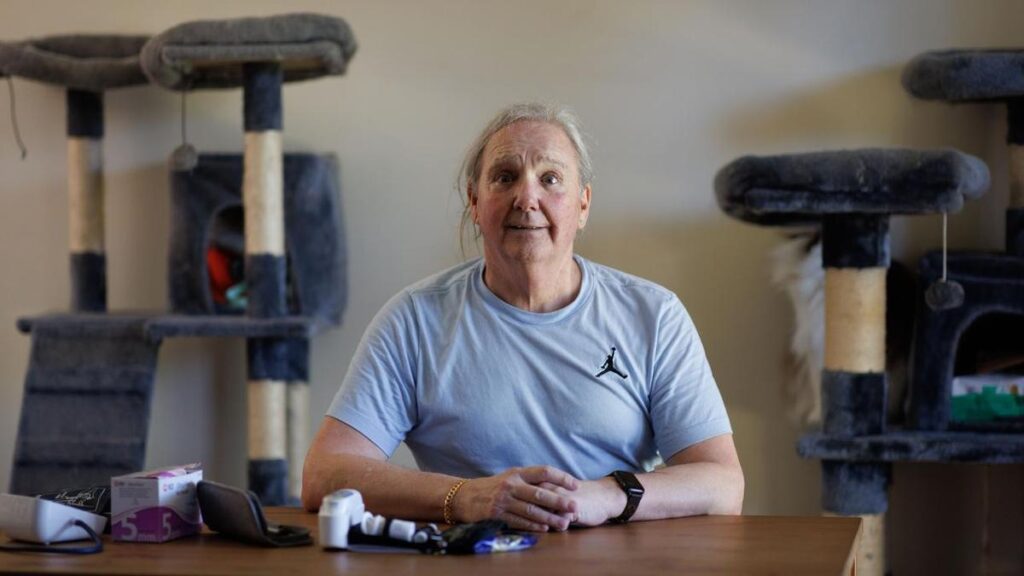When doctors told Ron Prouse he had pancreatic cancer, the 61-year-old Adelaide father-of-eight thought he’d been handed a death sentence.
“I’d heard about this stuff – this is the stuff that you die from,” he tells AAP.
“If you’re gonna get a cancer, it’s the one you don’t want.”
Mr Prouse had gone to hospital in 2022 with severe stomach pain that spread through his back. His blood pressure was dangerously high and the pain wouldn’t ease, not even with morphine.
Scans initially suggested pancreatitis, but further tests confirmed something far more serious.
“Within a week, I was in hospital having an operation,” he says.
“It all happened really quickly.”
The procedure, known as a Whipple, is one of the most complex surgeries in the field of medicine.
Surgeons removed part of Mr Prouse’s pancreas, gall bladder and sections of his upper gastrointestinal tract before reattaching what remained. Only about one in 10 pancreatic cancer patients are eligible for the surgery and even then, the risks are high.
“Sixteen per cent of people don’t make it off the table,” Mr Prouse says.
“I was lucky. A week and a half later, I walked out of hospital.”
He then underwent six months of chemotherapy, a gruelling process that left little time to process what had happened mentally.
“I didn’t have any time to get my head around it,” he said.
“They didn’t really give me choices, they just told me what they were going to do. But there was no question I’d say yes. I wanted to live.”
For most Australians diagnosed with pancreatic cancer, that option never comes. The disease is notoriously hard to detect and often advances without symptoms until it’s far too late for surgery.
Dr Mark Buzza, Head of Research, Innovation and Advocacy at the Pancare Foundation, calls it “the silent killer” – a cancer that’s rising fast but still poorly understood.
“It’s often called the silent killer because the symptoms are either very, very vague or often get passed off as other things, such as stress or back pain, or a bit of indigestion – and who doesn’t have that?” he tells AAP.
Early detection can result in effective surgery, but as the symptoms are so easily dismissed, most patients only get diagnosed when “that ship has sailed”.
“Too many Australians hear the words ‘pancreatic cancer’ for the first time when it’s already advanced,” Dr Buzza tells AAP.
“Unlike other common cancers, there’s no national screening program. It’s up to individuals to advocate for their own health.”
Each year, more than 4500 Australians are diagnosed with pancreatic cancer, but survival rates are a shocking 13 per cent.
By 2030, it’s projected to become the nation’s second leading cause of cancer death.
Dr Buzza says the grim outlook is driven by late detection, low awareness and a lack of research funding.
Australians should be paying close attention to any symptoms and pushing for screening and blood tests when something “feels off or wrong”, he says.
In Mr Prouse’s case, his symptoms could easily have been mistaken for something minor.
“I went in there with stomach cramps, stomach pain, diarrhoea but the pain was horrendous – right across my stomach and deep into my back,” Mr Prouse says.
Doctors later discovered the tumour had blocked his bile duct – one of the few ways pancreatic cancer can make itself known early.
“I got very, very lucky,” he says.
“That blockage made me sick enough to get checked.”
According to Dr Buzza, that kind of luck is rare. Symptoms such as jaundice, itchy skin, dark urine, abdominal or back pain, unexplained weight loss, fatigue or changes in appetite are often dismissed or misdiagnosed.
“People think it’s stress or diet-related,” he says.
“If something feels off, get checked. Early detection gives people the best chance of effective treatment.”
Four years on, Mr Prouse considers himself one of the fortunate few. His cancer markers remain clear, though the aftermath of his surgery means he now lives with type 3c diabetes – a form that develops after injury or surgery.
“I thought I’d dodged it, but eventually what was left of my pancreas couldn’t keep up,” he says.
“Now I’m one of the walking wounded. But it’s manageable – and it’s better than the alternative.”
He’s sharing his story during Pancreatic Cancer Awareness Month in the hope others won’t ignore early warning signs.
“I was healthy – running 10km two or three times a week. I was going to the gym four or five times a week,” he says.
“I didn’t see myself as an old, decrepit person dying of an ‘old person’s cancer’.”
https://thewest.com.au/news/health/silent-killer-pancreatic-cancer-cases-on-the-rise-c-20548095


